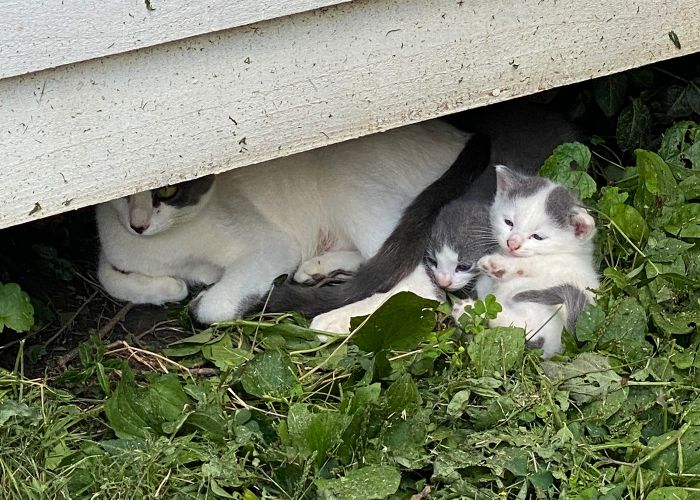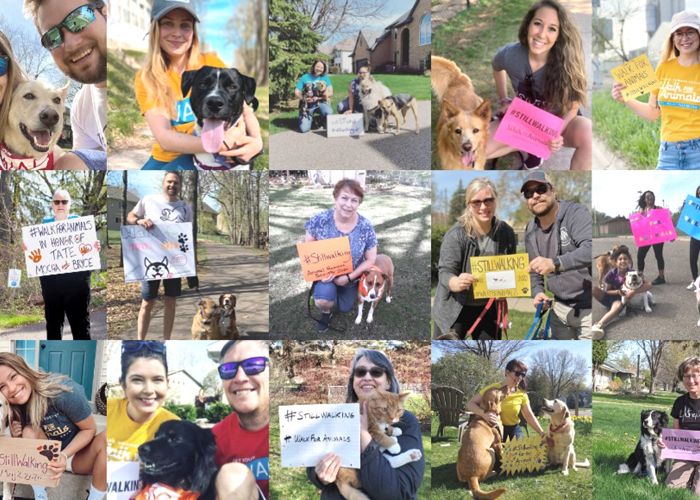Finding and sustaining the ‘helper’s high’
No one can have it all, but countless scientific studies show volunteers can get close

If you have a full-time job and also attempt to be a good friend, partner, parent and pet owner, it seems logical that adding volunteering to the mix would make you feel more stressed. And if your day job already includes helping or caring for others—hello, shelter and rescue staffers—it might even seem like adding volunteering would be not only stressful, but redundant.
Yet numerous studies show the opposite: A 2015 study in the Journal of Occupational and Environmental Medicine found that people who both worked and volunteered actually had better mental health and fewer feelings of work-life conflict. A 2013 study from Carnegie Mellon University found that adults over age 50 who volunteered regularly were less likely to develop high blood pressure than non-volunteers. Most surprising of all, a 2012 study published in Psychological Science found that “spending time on others increases one’s feeling of time affluence … driven by a boosted sense of self-efficacy.”
In other words, giving your time in service to others can make you feel like you have more time, even if your schedule is busier. Consider even the results of a 2004 survey led by British charity Community Service Volunteers: Almost a third of 18- to 24-year-olds said they had taken less time off work since starting to volunteer.
If you’re reading this magazine, you’re likely a onetime or longtime volunteer. You might be nodding along, or you might be scoffing at the idea of your overstuffed life granting you healthy blood pressure. Repeat after us: Volunteering doesn’t have to mean saying “yes” to fostering every neonatal kitten found within a 20-mile radius or agreeing to transport dogs from North Carolina to New England every weekend. The psychological and physical benefits Carnegie Mellon attributed to volunteering were linked to 200 or more volunteer hours each year, which is around 3 to 4 hours a week or a couple of days each month.
200 or more volunteer hours each year is enough to reap mental and physical benefits, according to a Carnegie Mellon study.
Even better, a British study published this year in the Journal of Happiness Studies found that, even accounting for pre-existing levels of well-being, 70,000 participants reported better overall health and life satisfaction if they’d volunteered just in the past year, with greater benefits the more frequently they volunteered. These benefits are imparted via volunteering even if your day job is also altruistically oriented (for example, if you already work at a nonprofit).
It’s the gifting of your time that really locks in those warm and fuzzy feelings, so you—yes, even you— might benefit doing some extra good on the side. Doing good is so good for you, you could even call it selfish.
It’s the gifting of your time that really locks in those warm and fuzzy feelings. Doing good is so good for you, you could even call it selfish.
What if I'm not feeling it?
If you volunteer and you’re not getting the “helper’s high” researchers have been going on about since the ’80s, consider where you’re volunteering and how much time you’re gifting.
Michele Elek teaches at a Phoenix middle school with a large number of low-income, transient families. She has an hour-long commute each way and three dogs. For the past 15 years, she’s also volunteered for animals almost every weekend, most recently at her local shelter, doing laundry, walking dogs and reading to or sitting with nervous animals.

Animals “are in situations through no fault of their own, so as long as you [don’t] take things personally, and really just build that foundation and that relationship and that trust with them, that’s how you see them flourish. It kind of crosses over” to her teaching job, says Elek, who provides her students with squeezy stress balls and gives them “job” titles, like “director of pet care” for the student in charge of feeding the campus cat colony that day. In an overwhelming year of unknowns, it helps to “control what you can control.”
Since 2014, Elek has also served as a district leader volunteer for the Humane Society of the United States, building support for legislation that helps animals. “Everyone can do a little something. Making phone calls, sending emails, sending cards, find what works for you in your time frame, your schedule, your energy level and what you have going on in your life, there’s some volunteer need out there,” says Elek. “I wanted to do something, rather than just sit and feel bad and be depressed.”
This flexibility is what makes volunteering work for Elek. Both organizations ask for as much or as little time as she can give, on the days and in the ways she can give it. “The shelter that I volunteer at makes it easy. You don’t have to commit, you just show up, you clock in, ‘whatever you can do is what you can do, we’ll take it,’” she says.
Look for volunteer programs that give you this understanding of what’s expected and realistically work with your schedule, says Hilary Hager, senior director of outreach and engagement at the HSUS, whether that’s a commitment to 10 hours a week or “do as much as you like.” If you’re unsure of how much or what you’re supposed to be doing, or feel pressured to participate in volunteer activities that don’t fit with your schedule, or feel guilty that you can’t do more once you see how much needs to be done, you’re setting yourself up for a stressful volunteer experience.
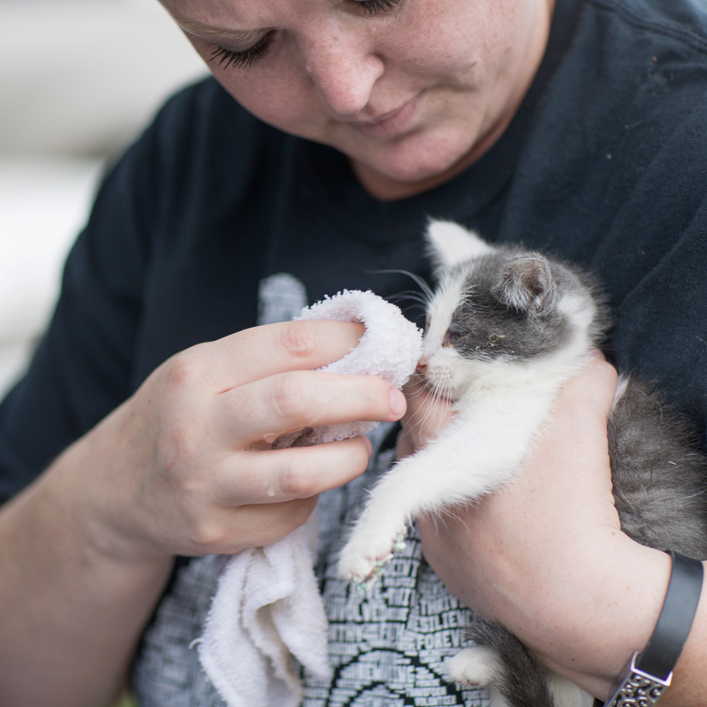
“One of the things I’ve always said to my volunteers is that I want their volunteer time to be the highlight of their week. I want them to be so excited: ‘It’s Thursday, I get to go to the shelter,’” says Hager. “If it ever stops feeling that way, then I think that it is worth having a conversation” about the ways and how often you’re able to volunteer. “The volunteer program’s role is to ask, but it’s the volunteer’s responsibility to say no.”
It can help to pick volunteer programs that allow you to complete tasks with a beginning, middle and end, says Hager— trapping a particular cat colony, taking a dog for a walk or doing a load of laundry—and enough volunteers to complete all the tasks. You’re not going to feel good about your volunteer experience if hundreds of dogs need walking and you know there are only enough volunteers to walk a few. It’s on the organization to ensure it has enough volunteers to walk those dogs every day—not you as a volunteer.
Volunteers “need to focus on the parts that they can really do and feel good about. It’s hard because we’re helpers, and we want to fix things, and we see things that need to be fixed,” Hager says. “So sometimes out of just concern for others we want to do more, but we can’t do it to our own detriment. You have to set boundaries just like you do with anything else.”
A few parting words: A 2012 study published in Health Psychology showed that only those who volunteer for altruistic, not self-oriented, reasons are gifted with the magical benefits of volunteering. So pick a good volunteer program, but also pick a cause you really care about; if you work with animals in your day job, you might even choose to volunteer for a non-animal cause you’re passionate about to provide some relief from your day-to-day. Otherwise, that helper’s high might be ever-elusive.
“One of the things I’ve always said to my volunteers is that I want their volunteer time to be the highlight of their week. I want them to be so excited: ‘It’s Thursday, I get to go to the shelter.’”
—Hilary Hager, Humane World for Animals
What about burnout?
We often think of burnout as having too much to do, when in reality, it’s more about how you feel about what you’re doing. The World Health Organization describes burnout as an occupational phenomenon characterized by feelings of exhaustion, cynicism about your job and reduced professional efficacy. Burnout isn’t a mental disorder, and it isn’t related to your having a leaky roof or going through a divorce, although these are very real stressors that will impact your emotional resilience and contribute to your feeling overwhelmed. According to WHO, burnout on its own is an exclusively occupational hazard, although we in the animal welfare field know it can apply to our volunteer work, as well, if we feel the same sense of running and running without getting anywhere.
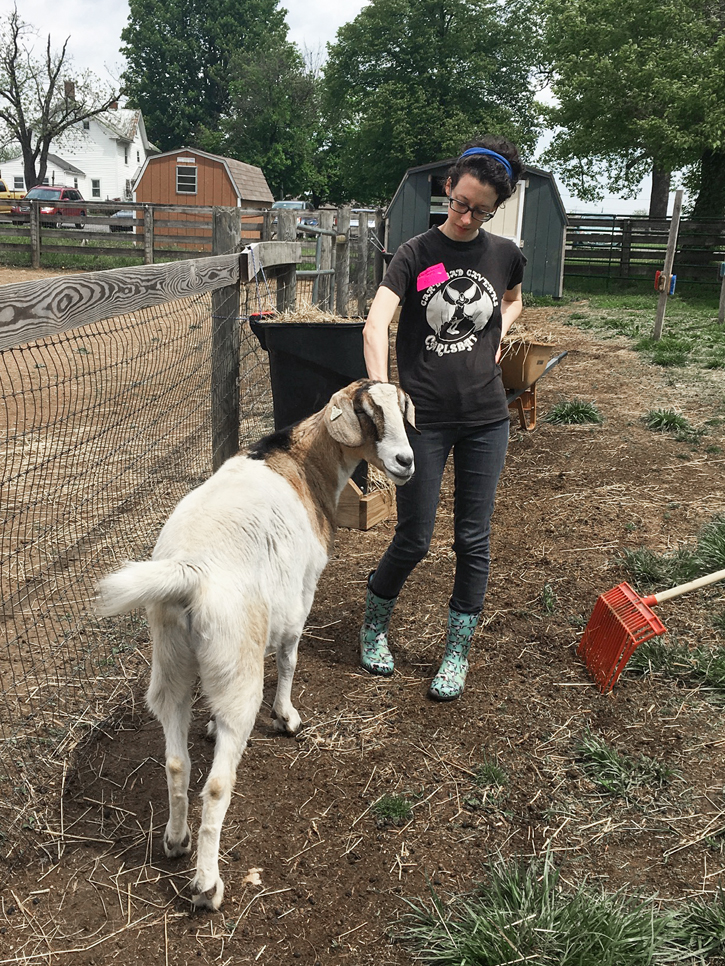
So what does cause burnout? In 2017, employee recognition and retention company O.C. Tanner published a white paper on workplace culture after interviewing over 10,000 employees worldwide. The company determined the “fundamental building blocks” of workplace happiness: purpose, opportunity, success, appreciation, well-being and leadership. If you don’t feel connected to your organization’s reason for being or the difference it makes in the world, if you’re not learning new skills, and if your contributions aren’t recognized, you’re likely to feel burned out at work.
But carefully chosen volunteer activities can actually serve as a mental health buffer both at home and at work. A 2001 study in the Journal of Health and Social Behavior found that volunteering positively impacts aspects of well-being that mirror those building blocks of workplace happiness: mood, life satisfaction, self-esteem, sense of control over life and physical health.
Not only that, but a 2013 study from the Journal of Economic Psychology found that volunteering is not subject to “hedonic adaptation,” a term for the human tendency to return to a set level of happiness regardless of positive or negative life changes. (In 1978, a landmark study examined lottery winners and found that, 18 months later, they were neither more nor less happy than before the life-altering event.)
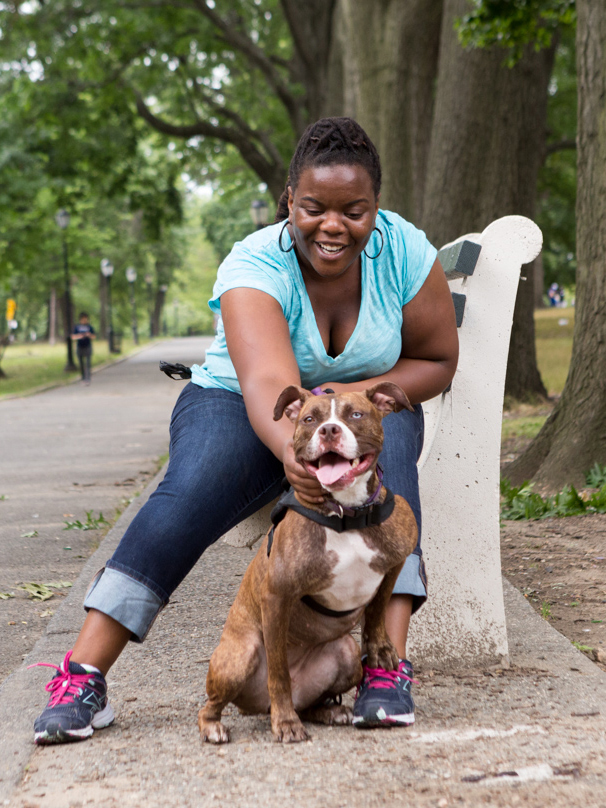
Hedonic adaptation doesn’t happen with volunteering. Volunteering not only boosts happiness, but continues to boost it over time, so much so that the 2013 study authors suggested that public policymakers should find ways to “stimulate volunteering and thus happiness.”
“I’ve met a lot of people who, even when things are hard in their volunteer job, they’re like, ‘Man, but this is the kind of hard I want,’” says Hager. “‘I don’t want the hard stuff with my accounting job or my hard stuff in the HR department at my company. This is a fun, different set of problems for me to grapple with and try to solve.’”
Another study, published in Psychological Science in 2018, invited participants to gift small amounts of money either to themselves or others over the course of two experiments. The authors found that the feeling of giving to others, even repeatedly, never got old for participants.
They concluded: “The happiness we get from giving appears to sustain itself.”
“When it feels like you can’t help yourself, maybe sometimes it can help to help others,” says Hager. “And by helping others, you wind up helping yourself.”


